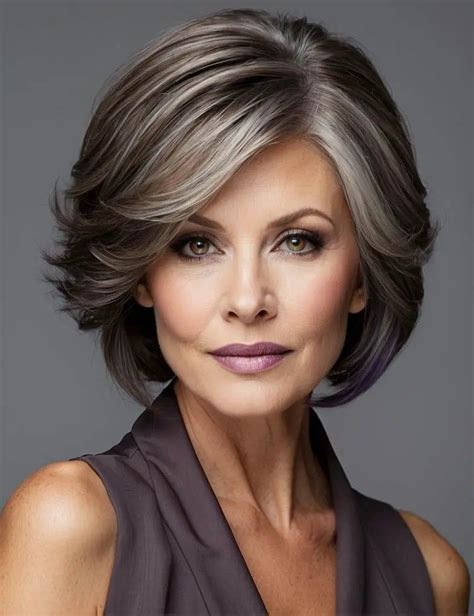Hair Color Application: The Ultimate Guide
Hair color application is an art form that can transform your look and boost your confidence. Whether you’re looking for a subtle change or a dramatic makeover, there are countless hair color applications to choose from. To help you navigate the world of hair color, we’ve compiled a comprehensive guide with 50 hair color application ideas, expert tips, and tricks.

Pain Points
- Fading and Uneven Color: Hair color can fade over time, leaving you with blotchy or uneven results.
- Damage: Harsh hair color chemicals can damage your hair, making it dry, brittle, and prone to breaking.
- Wrong Color Choice: Choosing the wrong hair color can be a disaster, leaving you with an unflattering or unnatural-looking hue.
- Expensive Salons: Professional hair color applications can be costly, especially for complex or elaborate styles.
- Time-Consuming: Traditional hair color applications can take hours to complete.
Motivations
- Transform Your Look: Hair color is a quick and easy way to change your appearance and express your personality.
- Cover Gray Hair: Hair color can effortlessly conceal gray hair, giving you a youthful and polished look.
- Enhance Features: The right hair color can complement your skin tone, eye color, and facial features.
- Boost Confidence: A flattering hair color can boost your self-esteem and make you feel more attractive.
- Trendy Styles: Hair color trends are constantly evolving, and you can keep up with the latest styles by experimenting with new applications.
Types of Hair Color Applications
1. Permanent Hair Color
- Lasts: Up to 6-8 weeks
- Chemical: Ammonia-based dyes that penetrate the hair shaft and change its natural color
- Pros: Long-lasting, vibrant colors
- Cons: Can damage hair, fades over time
2. Semi-Permanent Hair Color
- Lasts: 4-6 weeks
- Chemical: Ammonia-free dyes that deposit color on the hair’s surface
- Pros: Less damaging, fades gradually
- Cons: Not as long-lasting as permanent color
3. Demi-Permanent Hair Color
- Lasts: 2-4 weeks
- Chemical: Ammonia-free dyes that penetrate the hair shaft but not as deeply as permanent color
- Pros: Less damaging, semi-permanent results
- Cons: Fades faster than semi-permanent color
4. Temporary Hair Color
- Lasts: 1-2 washes
- Chemical: Non-permanent dyes that wash out easily
- Pros: No damage, easy to experiment with
- Cons: Not long-lasting
50 Hair Color Application Ideas
Natural Hair Colors
- Classic Blonde: A timeless and versatile shade that complements most skin tones
- Rich Brunette: A deep and luxurious color that adds depth and sophistication
- Auburn: A warm and vibrant red-brown hue that brings out golden undertones
- Sable Brown: A cool and elegant dark brown shade that adds volume and shine
- Chocolate Brown: A rich and luscious brown color that exudes depth and warmth
Highlights and Lowlights
- Blonde Highlights: Add subtle or bold highlights to brighten your natural hair color
- Brown Lowlights: Create a stunning contrast by adding darker lowlights to your blonde hair
- Caramel Balayage: A gradual transition from dark roots to light ends that adds warmth and dimension
- Reverse Balayage: A technique where the ends are darker than the roots, creating a trendy ombre effect
- Money Piece: Face-framing highlights that brighten your complexion and enhance your features
Artistic Hair Colors
- Pastel Hair: Soft and dreamy shades like baby pink, lavender, and mint green
- Neon Hair: Electric and vibrant colors like hot pink, blue, and yellow
- Ombre: A gradual transition from one color to another, creating a dramatic and eye-catching effect
- Hidden Color: A pop of color hidden underneath the top layer of hair, revealing itself when you move or part your hair
- Galaxy Hair: A combination of vibrant and metallic colors blended to create a celestial effect
Creative Hair Color Applications
- Dip-Dyed Hair: A fun and playful technique where the ends of your hair are dyed a different color
- Rainbow Hair: A vibrant and colorful style that incorporates all the colors of the rainbow
- Marble Hair: A technique that creates a blend of subtle and vibrant colors, resembling marble
- Mermaid Hair: A shimmering and iridescent hair color inspired by the ocean
- Unicorn Hair: A magical and ethereal style that combines pastel and metallic colors
Tips and Tricks
- Consult with a professional stylist to determine the best hair color application technique for your hair type and desired results.
- Always patch test a new hair color on a small area of skin to check for allergic reactions.
- Protect your hair from sun damage by using UV-protective hair products.
- Use color-safe shampoo and conditioner to maintain your hair color and prevent fading.
- Avoid over-washing your hair, as it can strip away color.
- Deep condition your hair regularly to restore moisture and prevent damage.
Common Mistakes to Avoid
- Over-processing Your Hair: Excessive chemical treatments can damage your hair and lead to breakage.
- Using Box Dye at Home: Box dyes can contain harsh chemicals that can damage your hair and produce unpredictable results.
- Choosing the Wrong Color: Choose a hair color that complements your skin tone and enhances your natural features.
- Not Using a Developer or Toner: A developer is necessary to lift the natural color of your hair, and a toner is essential for neutralizing unwanted tones.
- Overlapping Applications: Overlapping hair color applications can cause color buildup and uneven results.
Conclusion
Hair color application is a transformative beauty technique that can enhance your natural features, boost your confidence, and keep you on-trend. By understanding the different types of hair color applications, choosing the right color and technique for your hair type, and following our tips and tricks, you can achieve a flawless hair color that turns heads. Remember to consult with a professional stylist for the best results and to maintain your hair color with proper care and maintenance.
